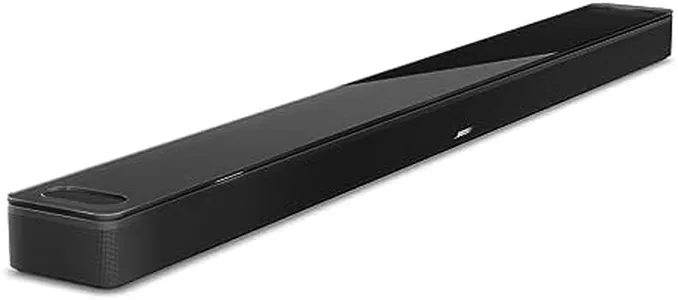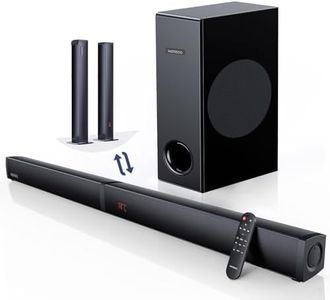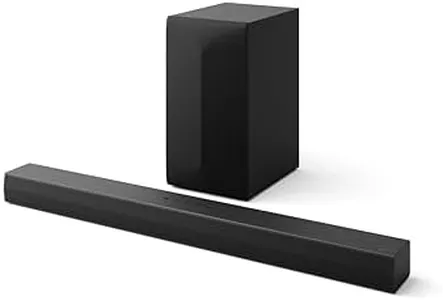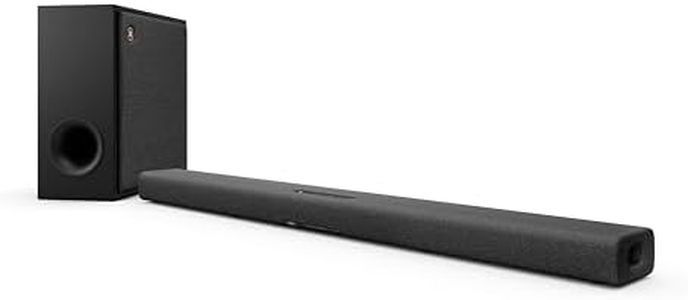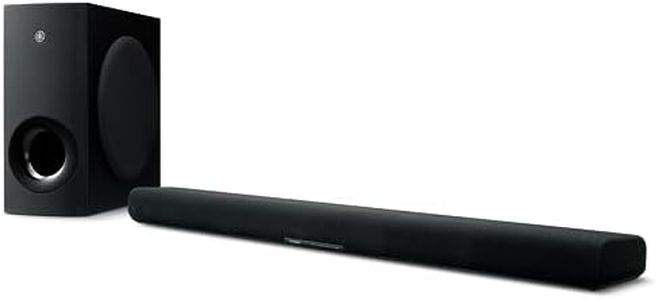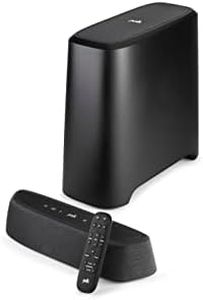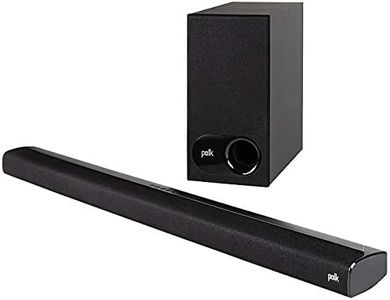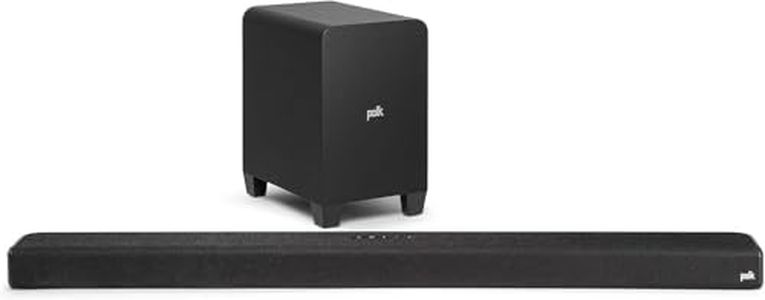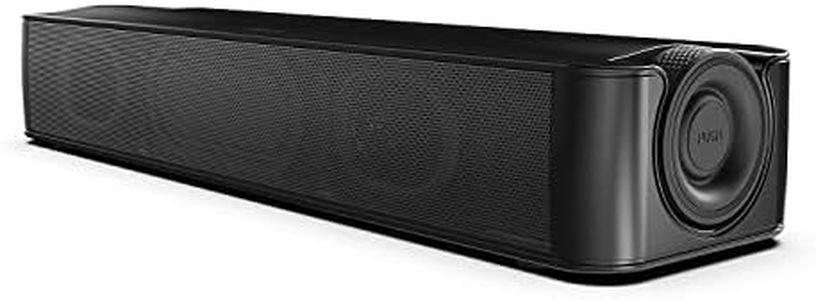We Use CookiesWe use cookies to enhance the security, performance,
functionality and for analytical and promotional activities. By continuing to browse this site you
are agreeing to our privacy policy
10 Best Soundbars Under 500
From leading brands and best sellers available on the web.By clicking on a link to a third party's website, log data is shared with that third party.
Buying Guide for the Best Soundbars Under 500
Shopping for a soundbar can make a huge difference in your audio experience, especially if you want to upgrade your TV's basic speakers without going overboard with a full home theater system. Soundbars are a great way to get clearer dialogue, richer sound, and even some cinematic effects in your living room, bedroom, or wherever you watch TV or listen to music. When choosing a soundbar, it’s important to look beyond flashy marketing claims and pay attention to key specifications that actually impact your listening experience. The best soundbar for you will depend on your space, what you like to listen to, and how you plan to use it.Channel ConfigurationChannel configuration tells you how many distinct speakers or audio channels the soundbar has, usually shown as two or three numbers (like 2.1, 3.1, or 5.1). The first number is the amount of main channels (typically left, right, and maybe center); the second is for subwoofers (the .1 means a dedicated bass speaker); and if there's a third number, it means up-firing or height channels for surround sound effects. More channels can mean richer and more immersive audio, but for most users, a 2.1 or 3.1 setup provides excellent improvement over TV speakers, while advanced setups with more channels are for bigger rooms or those who want a more theater-like experience. Think about your room size and whether you want virtual surround effects when picking the right setup.
Connectivity OptionsConnectivity refers to how your soundbar will connect to your TV or other devices. The common ways are HDMI ARC (or eARC), optical cable, Bluetooth, and sometimes Wi-Fi or auxiliary input. HDMI ARC offers the best sound quality and allows control of both the TV and soundbar with one remote, while optical connections are a good backup for older TVs. Bluetooth is handy for streaming music from your phone. Knowing which connections your TV supports, and thinking about how you want to use your soundbar—like streaming music or keeping things simple—will help you choose the best set of options for you.
Size and PlacementThe size and shape of a soundbar matter, since you want it to fit nicely in your space. A soundbar that's too long can look awkward or block your TV's sensor, while one that's too small may not deliver the weighty sound you expect. Measure the space below your TV or on your entertainment center, and keep in mind that soundbars are typically designed to match the width of your TV. Consider where you plan to place or mount the soundbar, and whether there’s space for a separate subwoofer if it comes with one.
Audio Decoding and Enhancement FeaturesAudio decoding features like Dolby Atmos, DTS:X, and virtual surround sound are ways that soundbars make the audio more immersive, sometimes simulating sound coming from all around you. Some of these features need special content and particular speaker setups, but even basic virtual surround can make movies and games feel more exciting. If you enjoy content with big soundtracks or action scenes, picking a soundbar that supports more audio enhancement formats could enhance your experience, while for mostly TV shows and news, these extras may not be as important.
Voice Enhancement and Dialogue ClarityMany soundbars include technologies or modes that boost dialogue so voices come through clear, even when action and music get loud. This feature is valuable if you find yourself turning up the TV to hear voices, or if you watch a lot of talk-heavy shows and movies. If you have trouble hearing dialogue, look for soundbars that highlight dialogue enhancement in their specs or include a dedicated center channel speaker.
Subwoofer TypeSome soundbars come with a separate subwoofer, while others have the subwoofer built in. External subwoofers generally deliver deeper, more powerful bass, which is great for action movies or music, but can mean more space is needed and extra setup. If you have limited space or prefer cleaner setups, a soundbar with an integrated subwoofer is an easier choice, though the bass won’t be quite as deep. Think about how much bass you want and how much space you have when deciding between these options.
